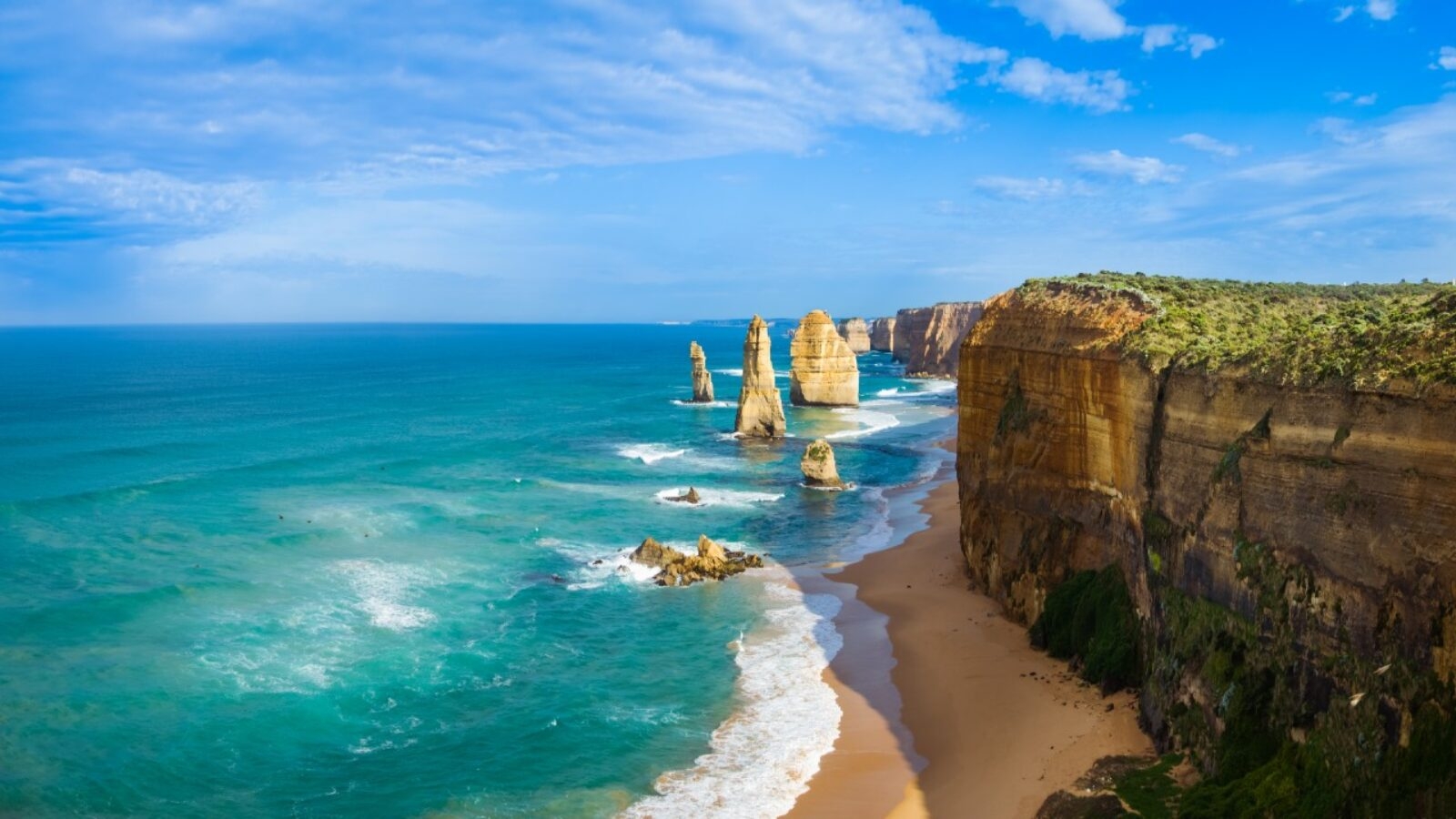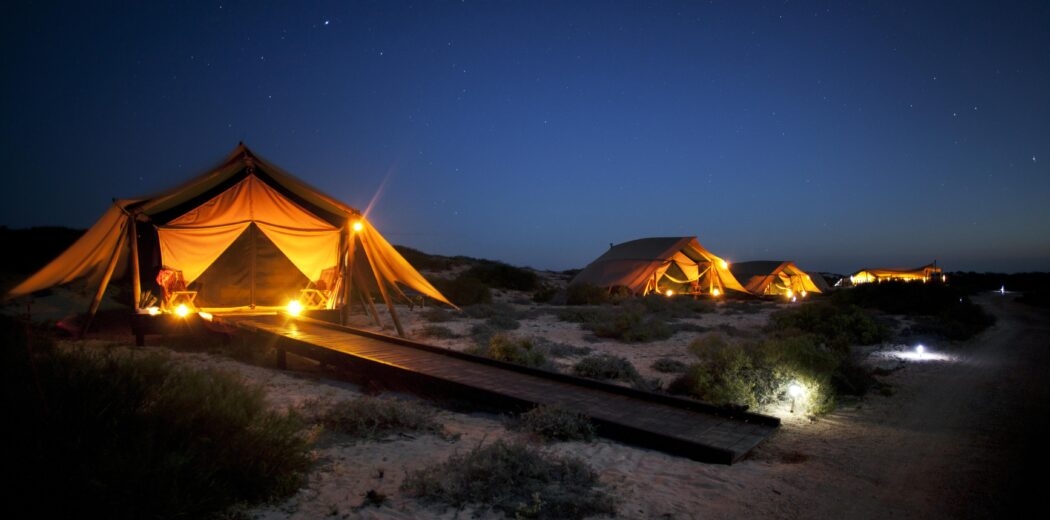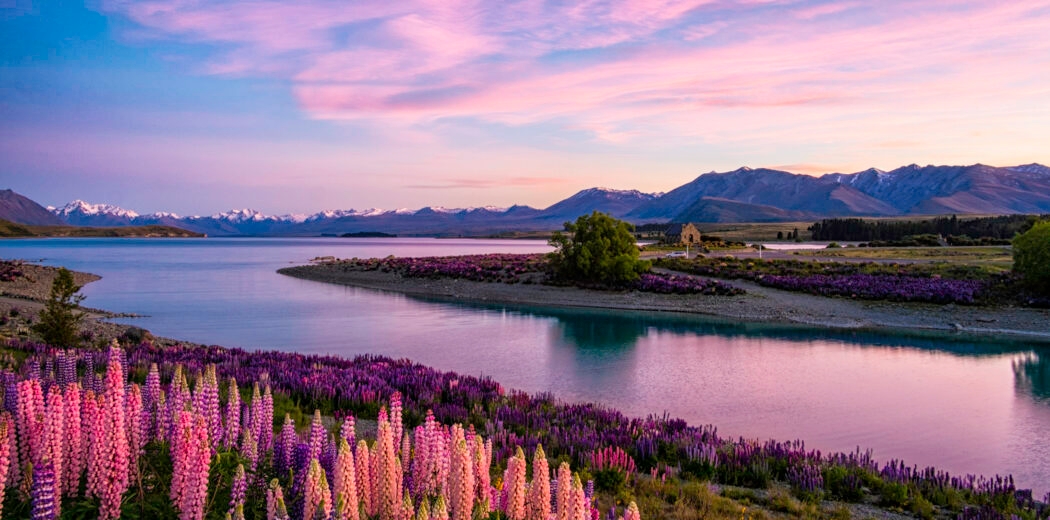Last updated: April 10th, 2025
Considering the fact that it’s such a large country, the best time to visit Australia depends on which region you’re headed to. In the south, spring (September–November) and autumn (March–May) offer great weather and smaller crowds than summer. Farther north, the dry season (May–October) brings the best weather conditions for outdoor adventures.
Of course, there’s much more to consider than just north or south – that’s why we’ve compiled a detailed guide to the weather, temperatures and other seasonal differences across Australia. Whether you want to go scuba diving in the Great Barrier Reef, discover the magic of the Outback, soak up the sun in Sydney or explore Tasmania, here are our top tips for when to go.
Australia month–by–month guide
No matter what time of year you’re travelling, you’ll find plenty to see and do across this exceptional country (and continent). Each month is ideal for certain cities, regions and activities, from hiking and snorkelling to wine tasting and wildlife spotting. The guide below is designed to help you choose the best season to go to Australia based on your specific interests.
January in Australia
January is the middle of summer in Australia, with temperatures peaking across the country. The most intense heat occurs in the interior regions, where it can exceed 38ºC (100ºF). We don’t usually suggest visiting the Outback or the Top End in this month; in addition to the heat, it’s also quite rainy and cyclones are possible. Farther south the weather is nice and warm, but it can be a bit crowded during the summer holidays.

Feburary in Australia
The late summer month of February sees similar weather to January, with highs around 26ºC (79ºF) in both Sydney and Melbourne. You can still enjoy sunny weather on the southern and eastern coasts with slightly thinner crowds than the preceding months. If you’re hoping to sunbathe on the beach and swim in the sea, February is a great time to visit South Australia.

March in Australia
March marks the beginning of Australia’s autumn shoulder season, making it a fantastic time to travel throughout the country. This is one of the best months to visit the big cities, but also to get off the beaten track in Tasmania or Western Australia. Perth sees highs around 29ºC (84ºF), while Hobart (the capital of Tasmania) peaks around 20ºC (68ºF). It’s still the rainy season in the Northern Territory (encompassing Uluru and the Top End).

April in Australia
April is a transitional month in northern Australia; the rain starts to clear up and temperatures drop, though it still reaches the upper 20sºC (low 80sºF) in the Outback. If you visit the Top End you can see Kakadu National Park blanketed in green foliage. The autumn wine harvest is in full swing in South Australia, making April a wonderful time to explore the Barossa Valley.

May in Australia
May ushers in the beginning of the dry season in the Northern Territory, which means cooler temperatures and sunny skies. It’s among the best times to visit the Great Barrier Reef for good diving and snorkelling conditions without the crowds of winter (June–August). May also marks the start of whale watching season, as several different species begin their annual migration.

June in Australia
June is the first month of winter in Australia, which is the low season in southern cities like Sydney and Melbourne, as well as Tasmania. But it’s also the peak season in the Great Barrier Reef and one of the best times of year to tour the Outback. If you’re in the south, we suggest heading inland to explore some of Australia’s best national parks – especially Flinders Ranges, which has the best hiking conditions in winter.

July in Australia
July is the coldest month across Australia. Expect average highs of 14ºC (57ºF) in Melbourne, 17ºC (63ºF) in Sydney, 18ºC (64ºF) in Perth and 20ºC (68ºF) at Uluru. Some northern cities, like Darwin, are still hot – 31ºC (88ºF) – even in July. If you’re hoping for beach weather, this is an excellent time to visit Brisbane and the east coast, although it can get a bit crowded in winter.

August in Australia
The Australian winter draws to a close in August, and temperatures start to rise slightly all over the country. It’s one of the best months for birdwatching in the Top End and is generally a good time to visit the Northern Territory; the weather is still optimal, and you’ll find smaller crowds since the winter school holidays have ended. August is also one of the best months for whale watching all over the country.

September in Australia
Spring arrives in Australia in September, making it a lovely month to head outdoors. Wildflowers bloom in Western Australia and wildlife abounds all over the country – you’re especially likely to spot baby koalas and kangaroos in this month. September is also a great time to visit Kangaroo Island in South Australia, as the weather is nice and summer crowds haven’t arrived yet.

October in Australia
October is the last month of the dry season in northern Australia, making it a good time to visit the Outback and the Top End before the rains return. In Sydney, average highs rise to 22ºC (72ºF) as summer approaches. This is one of the best months to visit the Whitsundays, as both the air and water are warm and there are fewer tourists – as well as fewer jellyfish – than there are in summer.

November in Australia
November is a transitional month between Australia’s spring and summer. Many popular destinations start heating up, with average highs in the low- to mid-20sºC (mid-70sºF) in coastal cities like Sydney, Perth and Melbourne. If you visit the Great Barrier Reef and Northern Queensland you might get to see nesting sea turtles (though the eggs won’t start hatching until January).

December in Australia
The Australian summer arrives in December. In the south, this means warm and sunny weather; in the north, it’s the beginning of the hot and humid rainy season. Sydney is incredibly lively in December, especially around New Year’s Eve. To escape the crowds, head outside the city to discover the rest of New South Wales. Tasmania is also lovely in summer, with average highs around 21ºC (70ºF) in Hobart.

When is the best time to travel to Melbourne?
The best time to travel to Melbourne is during spring (September–November) or autumn (March–May). Although the city has pleasant weather all year round, these shoulder seasons tend to be less crowded than summer (December–February) and not as chilly as winter (June–August), when average highs hover around 14–16ºC (57–61ºF). In late spring and early autumn you can expect highs in the low 20sºC (low 70sºF).
When is the rainy season in Australia?
The rainy season in Australia varies by region. In the northern part of the country the wet season runs from November to April, bringing strong rainfall and storms along with warmer weather. In the south it’s exactly the opposite; the wet season occurs during the colder months from April to November. However, the difference is less dramatic in the south, where there are four distinct seasons rather than just rainy and dry.
The top things to do in Australia
Australia has a lot to offer to visitors. You can go from the untamed wilderness of Tasmania to the rich culture of Uluru in the blink, and almost everything in between. Explore the remote corners of the Outback, swim in the turquoise waters of the Great Barrier Reef, hop from one island to the next, from north to south, or go wine tasting in a vineyard. Here’s when to visit Australia to enjoy your favourite activities.
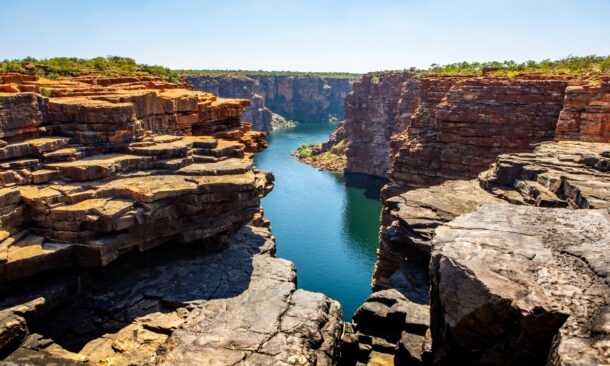
Explore Northwest Australia
The best time to visit Northwest Australia is between the winter months of June and October. During the dry season, day temperatures range from 20°C to 30°C (68°F to 86°F). This is the ideal time to enjoy the great outdoors.
The area is home to several First Nations communities where mountains, plains and deserts stretch as far as the eye can see. During the rainy season, most attractions in the region of Broome and The Kimberley are closed.

Visit Uluru and the Outback
The best time to visit the Australian Outback is during the dry season, between April and October when the daytime temperatures are pleasant. These conditions are best for hiking and other outdoor activities.
The area receives very little rainfall year round, but daytime temperatures between November and March can be quite high and unsuitable for hikes and trails. During the peak tourist season between June and September nighttime temperatures can dip down to (and sometimes below) freezing.
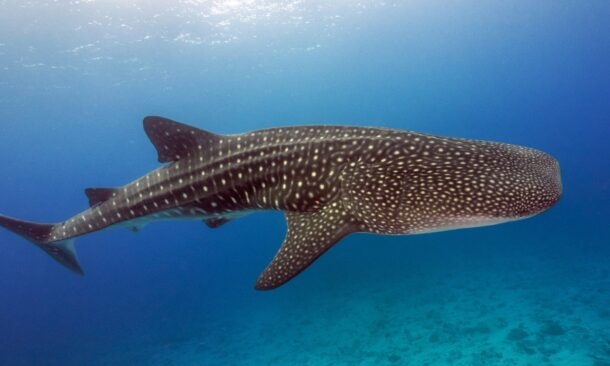
Spot Whale Sharks
April to mid-July is the best time to spot whale sharks in Australia. During these months, whale sharks congregate at Ningaloo Reef in Ningaloo Marine Park. In April, you can also see baby turtles hatching.
May to November are the best months to see manta rays and July to November are great for breathtaking sightings of humpback whales and dolphins. Our Positive Impact Principles offer some guidance on wildlife welfare with regard to excursions.
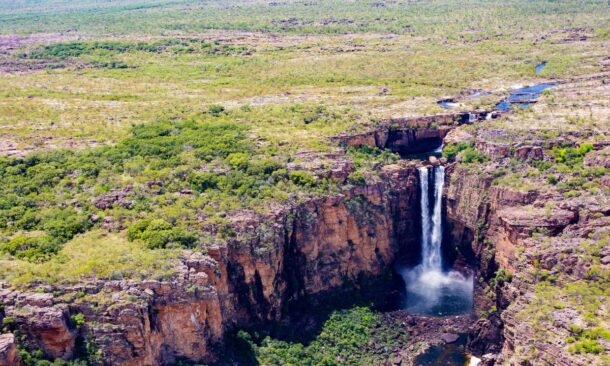
Go to Darwin
Calm and consistent weather from June to October makes this the best time to visit Darwin and Kakadu National Park. During the summer months between December and March, humidity levels rise, making it quite uncomfortable to explore the outdoors.
Stay at Bamurru Plains, which sits just west of Kakadu National Park for an immersive experience in nature. Spot several species of birds and wildlife, including wallaby and buffalo.
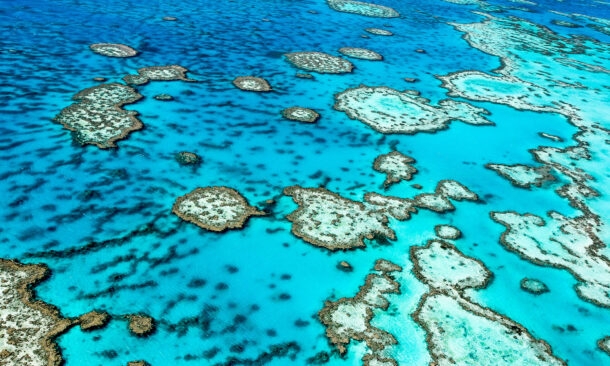
Go Diving in the Great Barrier Reef
The best time to visit the Great Barrier Reef is between April and October. The dry season runs from June to October. This is the peak season in the region. April and May are the best months to visit to avoid crowds. During these drier months, fewer rain showers make conditions perfect for underwater clarity.
If you’re headed to the Whitsundays, you should aim to go between April and October.

Visit New South Wales
Because New South Wales lies in the temperate zone, the climate is generally free from extreme temperatures. It tends to be pleasant year round with warm summer months between December and February and winter from June to August.
New Years is an extremely popular time to go to Sydney, and you usually need to book several months in advance if you want to be among the first in the world to ring it in.
When is the best time to visit the Australian Islands?
The best time to visit Tasmania
December through March is peak season for the island, with warm summer temperatures and plenty of outdoor activities. From March and April it starts to cool down, but most places are still open for business. Winter (June-August) is much colder and can even see snowfall, but there are lots of festivals on at this time of year, giving you a chance to see the island in a different light.

The best time to visit Kangaroo Island
You can visit Kangaroo Island all year round as it never really gets too hot or too cold. Peak season is usually during summertime (December to February) when it is warmest. Winters (June to September) are also a nice time to visit, with mild temperatures and rainfall reinvigorating the lush green landscape, and great opportunities for whale watching.

The best time to visit Lord Howe Island
The temperate climate and picturesque landscape of Lord Howe Island attract visitors all year round. Peak season is between September and June, with mild summer temperatures ensured by the cool sea breezes, whilst even the winter months (July and August) see easy temperatures and sunny days.
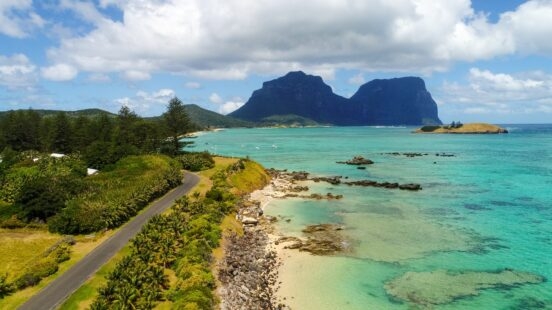
Ready to start planning your adventure?
Whatever you want from your adventure in Australia, our expert travel designers are ready to help.
